Related Research Articles

Alexander Leslie, 1st Earl of Leven was a Scottish soldier in Swedish and Scottish service. Born illegitimate and raised as a foster child, he subsequently advanced to the rank of a Swedish Field Marshal, and in Scotland became Lord General in command of the Army of the Covenanters, a privy councillor, captain of Edinburgh Castle, Lord Balgonie and Earl of Leven. In England he commanded the Army of the Solemn League and Covenant and was senior commander of the Army of Both Kingdoms (1642–1647). Leslie served in the Thirty Years' War, the Bishops' Wars, and most of the English Civil War, fighting primarily in the First English Civil War. Leslie would live a long life, dying roughly at the age of 80 or 81.
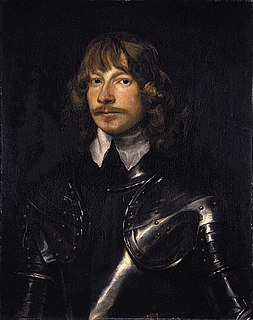
James Graham, 1st Marquess of Montrose was a Scottish nobleman, poet and soldier, lord lieutenant and later viceroy and captain general of Scotland. Montrose initially joined the Covenanters in the Wars of the Three Kingdoms, but subsequently supported King Charles I as the English Civil War developed. From 1644 to 1646, and again in 1650, he fought in the civil war in Scotland on behalf of the King. He is referred to as the Great Montrose.

Archibald Campbell, Marquess of Argyll, 8th Earl of Argyll, Chief of Clan Campbell was a Scottish nobleman, politician, and peer. The de facto head of Scotland's government during most of the conflict of the 1640s and 50s known as the Wars of the Three Kingdoms, he was a major figure in the Covenanter movement that fought for the maintenance of the Presbyterian religion against the Stuart monarchy's attempts to impose episcopacy. He is often remembered as the principal opponent of the royalist general James Graham, 1st Marquess of Montrose.
Major General Sir James Holborne of Menstrie was a Scottish soldier during the years of the English Civil War. He eventually reached the rank of Major General and fought with the Parliamentarians during the English Civil War, fighting at Newbury and Taunton. Although he initially fought on the side of the English Parliament, he later became a senior officer in the Scottish Army, fighting against Cromwell. He lived at Menstrie Castle, in Menstrie, Clackmannanshire, central Scotland, which he had purchased in 1649.

David Leslie, 1st Lord Newark was a Scottish cavalry officer. He fought for the Swedish army of Gustavus Adolphus during the Thirty Years' War. He had entered Swedish service in 1630, serving as a captain in the regiment of Alexander Leslie. He returned to Scotland just before the end of the Bishops' War, and participated in the English Civil War and Scottish Civil Wars.
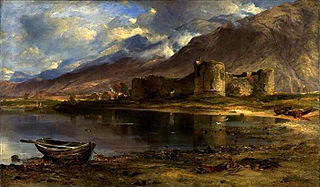
The Battle of Inverlochy occurred on 2 February 1645 during the Wars of the Three Kingdoms when a Royalist force of Highlanders and Confederate Irish troops under the overall command of James Graham, 1st Marquess of Montrose, routed and largely destroyed the pursuing forces of Archibald Campbell, 1st Marquess of Argyll, who had been encamped under the walls of Inverlochy Castle.

Between 1639 and 1653, Scotland was involved in the Wars of the Three Kingdoms, a series of wars starting with the Bishops Wars, the Irish Rebellion of 1641, the English Civil War, the Irish Confederate Wars, and finally the subjugation of Ireland and Scotland by the English Roundhead New Model Army.

Sir John Urry, also known as Hurry, was a Scottish professional soldier who at various times during the Wars of the Three Kingdoms fought for Scots Covenanters, Engagers and Royalists, as well as both English Parliamentarians and Royalists. Captured at Carbisdale in April 1650, he was executed in Edinburgh on 29 May 1650.

The Battle of Kilsyth, fought on 15 August 1645 near Kilsyth, was an engagement of the Wars of the Three Kingdoms. The largest battle of the conflict in Scotland, it resulted in victory for the Royalist general Montrose over the forces of the Covenanter-dominated Scottish Parliament, and marked the end of General William Baillie's pursuit of the Royalists.
The Battle of Alford was an engagement of the Scottish Civil War. It took place near the village of Alford, Aberdeenshire, on 2 July 1645. During the battle, the Royalist general James Graham, 1st Marquess of Montrose defeated the forces of the Covenanter-dominated Scottish government, commanded by William Baillie.

The Engagers were a faction of the Scottish Covenanters, who made "The Engagement" with King Charles I in December 1647 while he was imprisoned in Carisbrooke Castle by the English Parliamentarians after his defeat in the First Civil War.
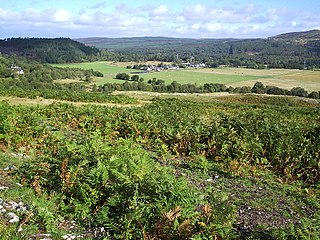
The Battle of Carbisdale took place close to the village of Culrain, Sutherland, Scotland on 27 April 1650 and was part of the Wars of the Three Kingdoms. It was fought by the Royalist leader James Graham, 1st Marquess of Montrose, against the Scottish Government of the time, dominated by Archibald Campbell, 1st Marquess of Argyll and a grouping of radical Covenanters, known as the Kirk Party. The Covenanters decisively defeated the Royalists. The battlefield has been inventoried and protected by Historic Scotland under the Scottish Historical Environment Policy of 2009. Although Carbisdale is the name of the nearest farm to the site of the battle, Culrain is the nearest village.
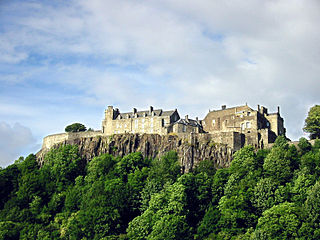
The second Battle of Stirling was fought on 12 September 1648 during the Scottish Civil War of the 17th century. The battle was fought between the Engagers who were a faction of the Scottish Covenanters under the command of George Munro, 1st of Newmore and who had made "The Engagement" with Charles I of England in December 1647, against the Kirk Party who were a radical Presbyterian faction of the Scottish Covenanters who were under the command of Archibald Campbell, 1st Marquess of Argyll.

Clan Leslie is a Lowland Scottish clan. The progenitor of the Clan, Bartolf, was a nobleman from Hungary, who came to Scotland in 1067. He built a castle at Lesselyn, from which the clan name derives.
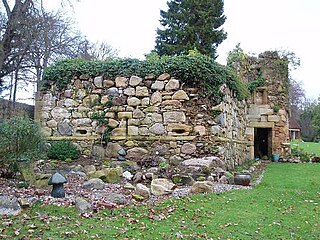
Sir George Munro, 1st of Newmore (1602–1693) was a 17th-century Scottish soldier and member of parliament from the Clan Munro, Ross-shire, Scotland. He was seated at Newmore Castle. Between 1629 and 1634 Munro held command in the Swedish army during the Thirty Years' War, and from 1642 in the Scottish Covenanter army during the Irish Confederate Wars before changing his allegiance to the Royalist cause of Charles I in 1648 during the Scottish Civil War and Irish Confederate Wars.

The Battle of Preston, fought largely at Walton-le-Dale near Preston in Lancashire, resulted in a victory for the New Model Army under the command of Oliver Cromwell over the Royalists and Scots commanded by the Duke of Hamilton. The Parliamentarian victory presaged the end of the Second English Civil War.
The Battle of Mauchline Muir was an engagement fought on 12 June 1648 between two rival factions of the Covenanters of Scotland. On one side where those who favoured The Engagement, known as Engagers, and those who were opposed to the Engagement, and known as the Kirk party.
Archibald Strachan was a Scottish soldier who fought in the Wars of the Three Kingdoms, reaching the rank of Colonel.
The Western Association was a Scottish military association to coordinate the military forces of the south western counties of Scotland during the War of the Three Kingdoms.
This is a timeline of events leading up to, culminating in, and resulting from the Wars of the Three Kingdoms.
References
- ↑ Sir Robert Cockburn of that Ilk, 9th Bt. and Harry A. Cockburn, The Records of the Cockburn Family, T. N. Foulis, London and Edinburgh, 1913.
- ↑ Alexia Grosjean, Alexander Leslie and the Scottish Generals of the Thirty Years' War, 1618-1648, Routledge, 2015.
- ↑ Charles S. Terry (ed.), Papers Relating to the Army of the Solemn League and Covenant, 1643-1647, Vol. I, Publications of the Scottish History Society, Second Series, Vol. XVI, Edinburgh, 1917.
- ↑ Stuart Reid, Auldearn 1645: The Marquis of Montrose's Scottish Campaign, Osprey Publishing, Botley, Oxfordshire, UK, 2002.
- ↑ James Hogg, Tales of the Wars of Montrose, revised edition prepared by Gillian Hughes, Edinburgh University Press, 2002.
- ↑ Alisdair McRae, How the Scots Won the English Civil War: The Triumph of Frazer's Dragoones, The History Press, 2013, ISBN 0752498630.
- ↑ Sir Robert Cockburn of that Ilk, 9th Bt. and Harry A. Cockburn, The Records of the Cockburn Family, T. N. Foulis, London and Edinburgh, 1913.
- ↑ Act 1649/1/316,The Records of the Parliaments of Scotland to 1707, the University of St. Andrews.
- ↑ Sir Robert Cockburn of that Ilk, 9th Bt. and Harry A. Cockburn, The Records of the Cockburn Family, T. N. Foulis, London and Edinburgh, 1913.
- ↑ Sir Robert Cockburn of that Ilk, 9th Bt. and Harry A. Cockburn, The Records of the Cockburn Family, T. N. Foulis, London and Edinburgh, 1913.